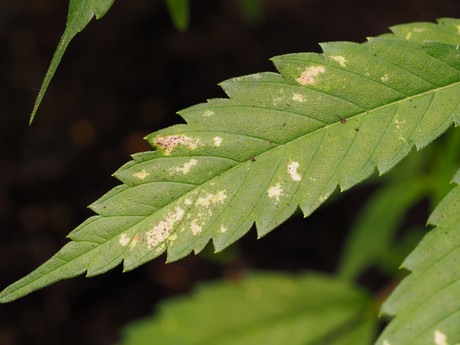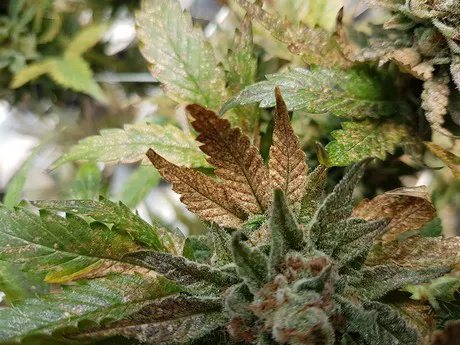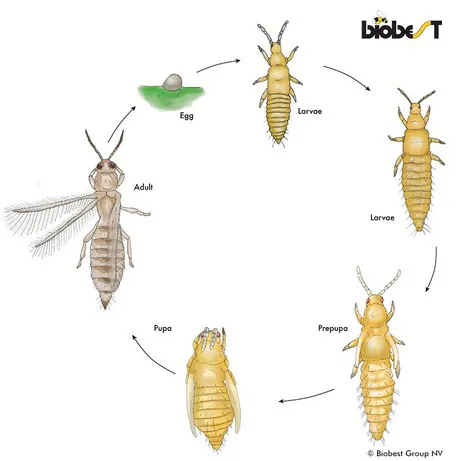There are over 6,000 species of thrips worldwide, including some which are predatory and many that survive on fungus alone.
“While only around 1% of thrips species damage crops – they include some of the most economically important pests of global agriculture,” explains Biobest’s IPM and Pollination Specialist Simon Foster.
“They are serious pests due to their wide distribution, polyphagous habits, unusually high rate of reproduction, fast development time and ability to quickly develop resistance to pesticides. In addition, a small number are plant virus vectors, especially of the Tospoviruses.”
 Simon Foster (IPM and Pollination Specialist at Biobest)
Simon Foster (IPM and Pollination Specialist at Biobest)
Sign & Symptoms
Thrips damage crops through feeding and egg laying (oviposition). During feeding, the pests damage surface tissues with their piercing-sucking mouthparts.
“On actively growing tissues feeding causes distortion, reduced leaf area, stunting, excessive vegetative branching and even the death of new apical tissues,” explains Simon. “On fully grown leaves, feeding can cause aesthetic damage – while economic crop losses are particularly serious when they act as plant virus vectors.
“The nymphs and adults are often hidden from view in flower buds or young folded leaves. Difficult to scout, it is important to deploy sticky traps for monitoring. It is critical to place traps close to the crop as thrips are weak flyers.”

Pest Host Range
Thrips species such as Frankliniella occidentalis, Thrips tabaci and Thrips palmi are global pests damaging a wide range of crops including vegetables, berries, herbs and medicinal plants, ornamentals and top fruit.

“Whatever the crop, prevention is key - plus a range of control methods with differing modes of action - targeting different life stages,” explains Simon.
What does it look like
Thrips adults are small, slender insects with fringed wings - held unfolded at rest - and range in colour from pale yellow to almost black.
“Identification relies on microscopic features such as antennal segmentation and is often better left to an expert, but identification is important because different thrips require different solutions,” says Simon.
Life Cycle
Eggs are typically inserted into plant tissue. The early nymphal instars are wingless but actively feed on crops, while the prepupal and pupa stages are not active and non-feeding.
Male thrips develop from unfertilized eggs – with the ratio of males to females dependent upon factors including density and temperature. Its impressive speed of development varies according to temperature, crop type and resources available.

Solutions
Successful thrips control strategies consists of several parts. Remember that prevention is better than cure.
To monitor the thrips, you can rely on Biobest’s Bug-Scan® in combination with the species-specific aggregation pheromone ThriPher (monitoring WFT).
For biological control of thrips, you can introduce:
·Predatory bugs such as Orius-System;
·Predatory mites such as Amblyseius-System, Swirskii-System, Hypoaspis-System en Montdorensis-System;
·Green lacewing Chrysopa-System;
·Rove beetle Atheta-System;
·Nematodes such as Steinernema-System
To boost the population establishment of your beneficials, you can use the feed supplement Nutrimite™ in addition to Swirskii-System.
 Biobest Belgium NV
Biobest Belgium NV